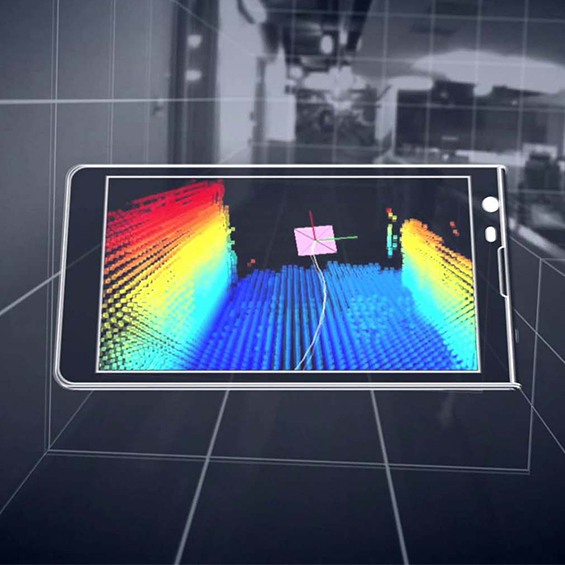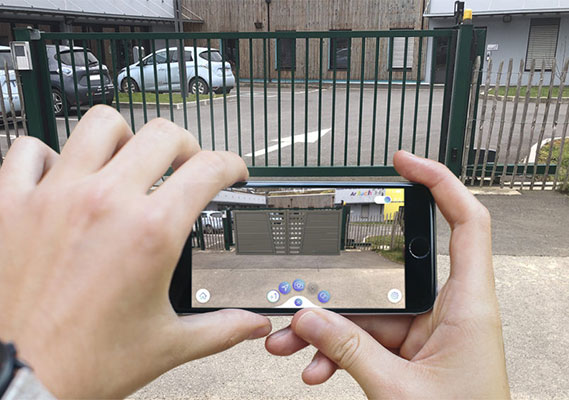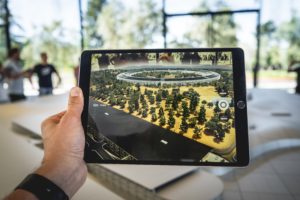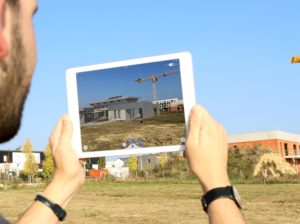ARkit vient bousculer le monde de la réalité augmentée
Depuis maintenant plusieurs années, Apple et Google s’affrontent dans une impitoyable bataille pour devenir les précurseurs d’une nouvelle manière d’afficher la réalité augmentée. Déjà présente dans le quotidien de millions d’utilisateurs par le biais des applications de réseaux sociaux, la réalité augmentée n’a pas fini de changer nos pratiques.
Une initiative démarrée par le géant Google
Premier à tenter l’aventure, Google avait présenté « TANGO », sa nouvelle plateforme de réalité augmentée en 2014. L’objectif de Google était, à l’époque, d’améliorer la technologie existante grâce à des ajouts de capteurs spécifiques directement dans le smartphone pour traquer les mouvements, détecter et calculer les distances dans l’espace. Grâce à ces nouvelles informations, TANGO permettait alors d’afficher un modèle 3D dans le réel à travers le flux vidéo de l’appareil photo de manière réaliste.
Cette technologie venait révolutionner les usages en se passant de repères visuels physiques (les marqueurs), jusque-là nécessaires pour fixer l’élément en 3D dans l’environnement.
Malheureusement, le prix de ces évolutions matérielles a rapidement freiné l’emballement des constructeurs. Seulement deux modèles de smartphones ont été équipés du système TANGO, limitant très fortement son déploiement grand public.

Apple devient le leader de la plateforme de réalité augmentée avec ARKit

Apple de son côté a rapidement compris que la solution était entre ses mains puisque le géant californien est à la tête du plus grand parc mondial de smartphones. Dès 2015, Apple fait l’acquisition de plusieurs sociétés spécialisées dans la réalité augmentée. Lors du WWDC (Apple Worldwide Developers Conference) de juin 2017, la marque à la pomme annonce le projet ARKit, sa nouvelle plateforme de réalité augmentée destinée aux développeurs.
Contrairement à Google, Apple part sur une solution entièrement logicielle afin de rendre compatible un maximum de ses appareils déjà sur le marché. Ici également, la profondeur de l’espace et la lumière sont calculées en temps réel et permettent une restitution réaliste des objets en 3D dans l’environnement réel.
Les développeurs peuvent alors créer des applications, comme Urbasee ou Ikea Place, qui seront directement utilisables sur tous les appareils depuis le modèle IPhone 6s.
Face aux avancées colossales d’Apple, Google décide de stopper net son projet TANGO, pour partir sur une solution très similaire à celle de son concurrent. Baptisée ARCore, cette nouvelle plateforme sera déployée sur un nombre important de modèles de smartphones haut de gamme Android. Avec cela, Google cherche à rattraper son retard et propose également l’expérience de réalité augmentée au plus grand nombre. La première version d’ARCore a été lancée à destination des développeurs en février 2018. URBASEE est donc également disponible pour les smartphones Android compatibles avec ARcore.
La course à l'adoption de la réalité augmentée
Maintenant que la technologie est au point et disponible sur un maximum de terminaux mobiles, il reste aux deux géants des GAFAM la lourde tâche de procéder à des mises à jour régulières afin de proposer une expérience de réalité augmentée toujours plus bluffante. La multiplication des usages reviendra alors aux développeurs, puis au grand public.



